The culture of Moroccan craftsmanship is certainly diversified and today we find it represented in many different ways. The best things to buy in Morocco are carpet weaving, pottery, basketry, embroidery, jewelry and, of course, leather.
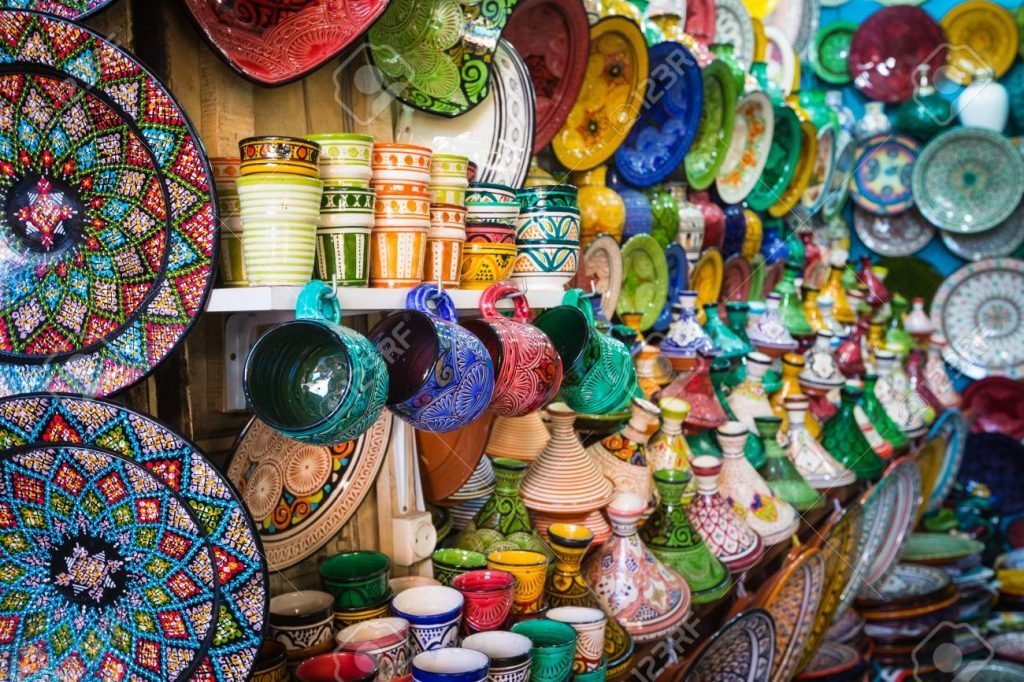
Moroccan craftsmanship and art have been passed down from generation to generation, from father to son, with great care, bequeathing pieces of great beauty. In the following lines we deal with the main ones, so you can get an idea of it before your trip to Morocco.
Handicrafts
In Morocco, handicrafts for the home have a great development. For example, pottery, with authentic works of art in baked clay, although for the locals are still used as everyday objects.
The pioneering city in this technique is Fez, where blue-colored ceramics are mainly worked. Safi is not far behind, as it is the natural heir of the former, although brown, green and yellow predominate in its works.
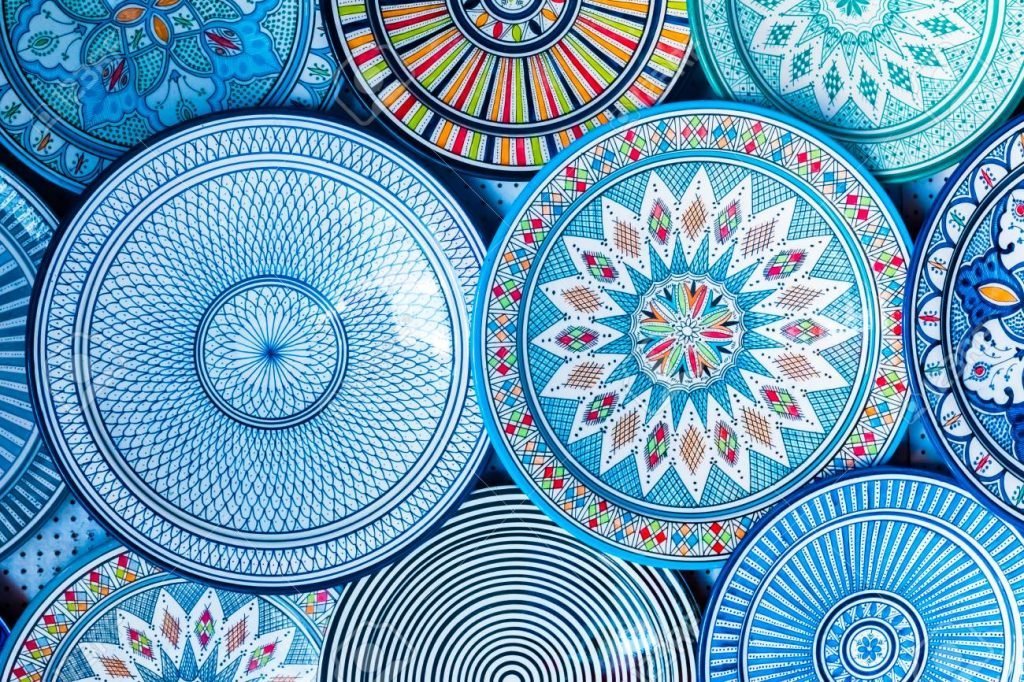
On the other hand, in cities such as Azemmour, Marrakech, Meknés, Rabat and Tarudant you will find samples in coarse glazed or enameled earthenware. However, this type of Moroccan craftsmanship is widespread throughout the country and each region produces its own type of pottery. In general, two different varieties are made: on the one hand, the purely ornamental and, on the other hand, those that have a utilitarian purpose, either for the transport of food or for its preservation. They are usually decorated with geometric or symbolic figures.
Carpets: a widespread Moroccan handicraft
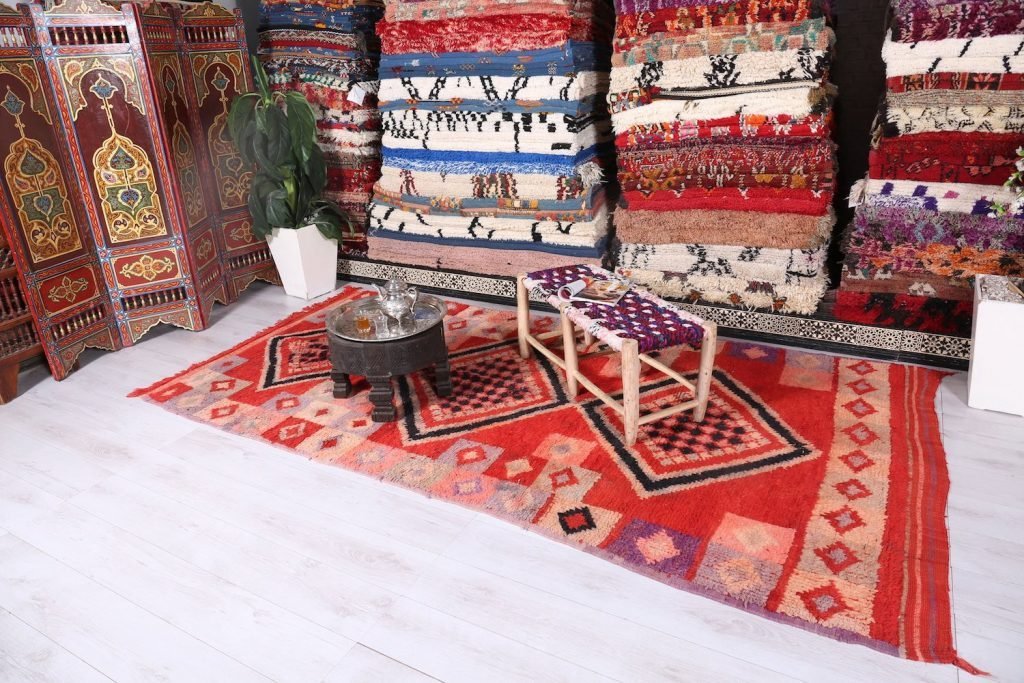
One aspect that determines the characteristics of carpets is their possible use and the place where they will be placed. In particular, they will influence the dimension and the composition of the product, which is defined by its weft and the number of knots.
On the one hand, there are country carpets and, on the other hand, city carpets. The so-called peasant or Berber carpets, with geometric motifs, are coarser but more colorful. Those of the Middle Atlas stand out, either those with colored backgrounds in Meknes or those with white backgrounds and dark figures in Taza; those of the High Atlas, with a fine constitution; those of Marrakech, the most imaginative; and those of the east of the country, with blue and green tones on dark backgrounds.
On the other hand, city carpets are more popular than country carpets, especially those made in Rabat, in which there is a predominance of red and oriental-influenced figures.
Embroidery, another masterful example of Moroccan craftsmanship.
In northern Morocco, the most appreciated and popular handicrafts include embroidered fabrics. Especially in cities such as Azemmur, Fez, Meknes, Rabat, Salé, Tetouan and Chaouen, where different techniques have been developed over time, according to different influences. However, they all have in common the design motifs and the richness of their colors.
The city of Fez specializes in silk embroidery on linen and cotton, as well as gold thread work and satin veils. Meknes is popular for its embroidery in soft colors, while Rabat is dominated by Al-Andalus heritage motifs. The city of Salé stands out for its decorative shapes and designs, while Azemmour is noted for its colorful embroidery used as tapestries or curtain ornaments.
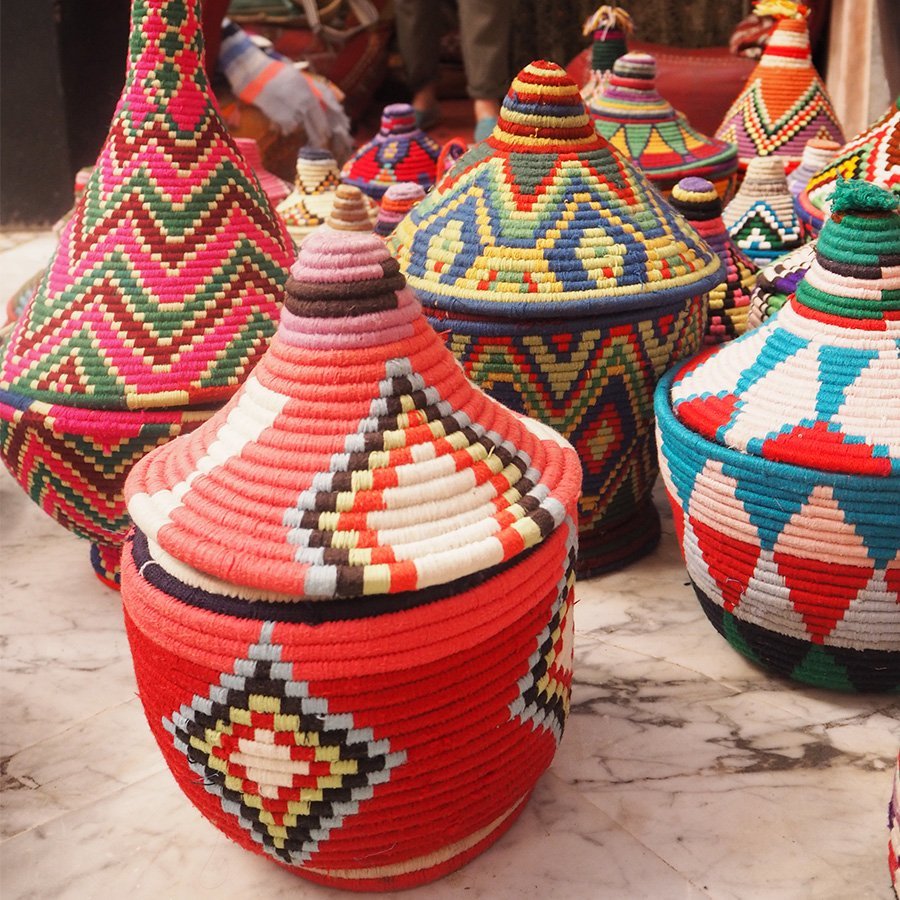
Basketry, a humble and practical Moroccan handicraft
Basketry in Morocco has been conceived to meet the ordinary needs of its inhabitants. Materials such as dwarf palm, reed and cane are used to create garden furniture, lamps, hats and various baskets that facilitate the transport of purchases.
Leather goods, popular with tourists
The country’s leather goods are very popular with tourists. Their work has become more sophisticated over the years, so it will not be difficult to find magnificent poufs, cushions, bags, suitcases, belts and jackets. In the past, only saddles, book backs or slippers were made, but this type of Moroccan craftsmanship has diversified enormously in our days.
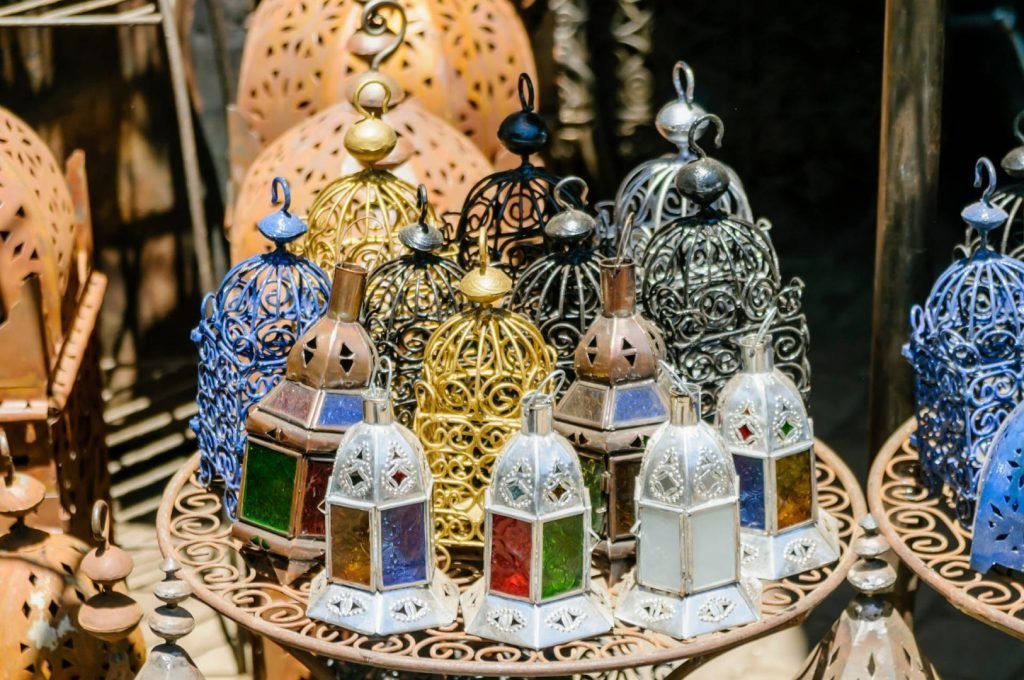
Jewelry, in gold, silver and precious stones
In Morocco, handicrafts for personal use are very successful, as we have seen with the works made in leather. But the main one is jewelry, which is often made in gold, although silver and precious stones are also among the rich materials used. This ancient craft is carried out by a guild that has been inhabiting the same neighborhoods for many, many years in cities such as Essaouira, Fez, Marrakech, Meknes, Rabat, Salé and Tangier.
Rural Berber jewelry only exists in silver. In Ouarzazate, Tazenajt and Talouin you will find beautiful pieces made by these tribes, who usually set the price according to the weight, ignoring the quality or aesthetics of the object. Their curved daggers are certainly admirable.
Art
There are different ways in which Moroccan art is expressed: Precious craftsmanship in carpets, clothing, jewelry, ceramics, sculpture, painting and calligraphy.